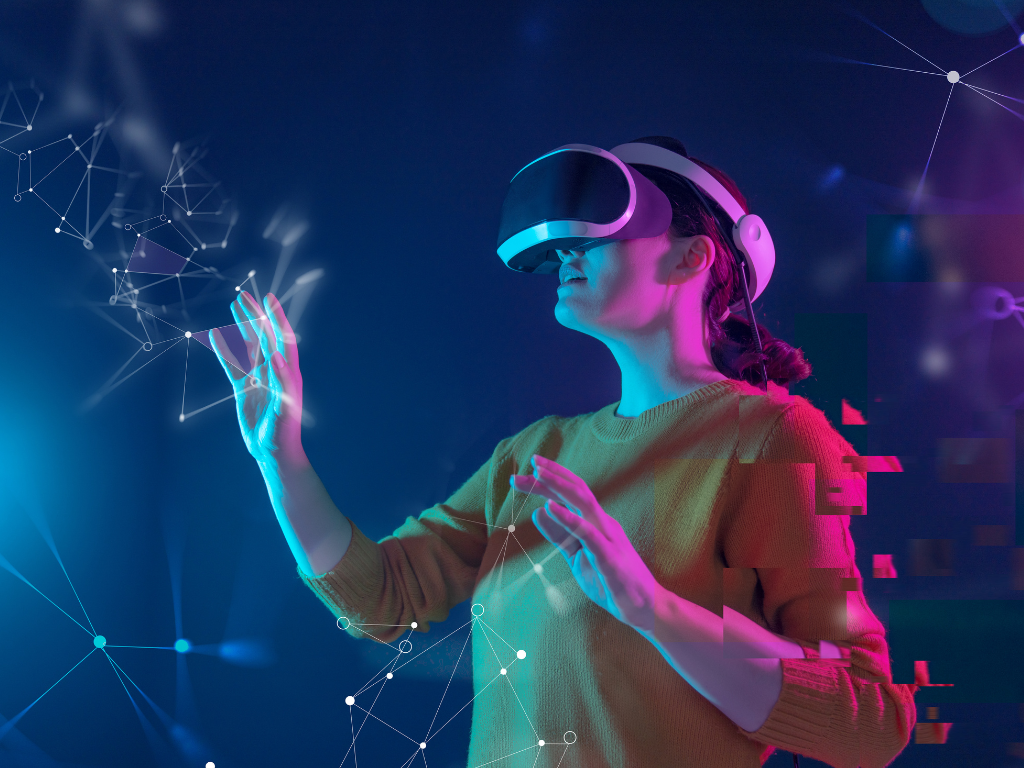Have you ever imagined what it would be like to step into a virtual world or augment your surroundings with digital information?
look no further, as Extended Reality (XR) technology makes it possible. From virtual classrooms to gaming, from medical training to entertainment, the possibilities of XR are endless.
Get ready to explore a new dimension of reality.
1- Gaming
Gaming is probably the number one use case that compels developers to add extended reality and its types into the smartphone user experience.
People worldwide love playing games on their mobile devices, and game developers have been offering new ways to enhance users’ gaming experience.
Augmented and virtual reality probably caught their attention at once on their arrival, and they decided to include them in their products.
Pokemon Go took the gaming world by storm upon its inception and still attracts over 70 million players after so many years. After it, many games were released, copying its technology.
Now, multiple video games using AR are available in the market today. Furthermore, tech leaders have developed excellent VR-based games such as Half-Life: Alyx, Moss, and Beat Saber.
Related Read: Difference Between Extended Reality and Augmented Reality
2- Product Design in Car Industry
Previously, car manufacturers had to trust their designer and developer’s outline of products and gave a go-ahead. It sometimes led to errors in design and functionality that only caught the eye after it started running.
Extended reality has solved this issue for many vehicle manufacturers. BMW utilizes AR in layout to offer car features and the latest interior ideas.
It provides vehicle developers an effortless way to view how a product will appear, how it will run, and its overall functionality before the design is approved for manufacture.
Land Rover has innovated a VR-powered design process to view how prospective cars will appear externally and internally.
Extended reality has shortened the lengthy and technical process of vehicle development. Car manufacturers view their designed products in 3D before they send them ahead to become a reality.
3- Try Before You Buy
Extended reality offers virtual try-on to shoppers before they decide to buy something. Now, you don't need to go inside a try room and wear the clothing item you intend to buy. No, you just point your phone’s camera at the item and see yourself don it.
XR will revolutionize the e-commerce industry as online buyers will be able to view how a certain watch or glasses look on them.
Ladies especially have difficulty deciding on a cosmetics item like lipstick since they can’t see how it will look on their faces at a glance.
AR has taken the trouble out of having to apply a cosmetics product on the face and then check in the mirror for ladies. Loreals have launched mobile phone applications for their customers to do that, while their physical stores also offer that option.
Vertebrae is among the most notable extended reality examples. It enables customers to utilize AR and 3D tools to offer their buyers a virtual try-on option before paying the price.
Homeware and furniture brands are also using Vertebrae to provide their consumers with the option to see products in their houses on their gadgets.
4- Surgery in the Medical Industry
Extended reality is also helping doctors and healthcare experts better serve their patients. You know how hesitated and frightened you feel when a doctor suggests surgery for your medical illness.
Patients want to know what a surgeon will do inside their bodies before affirming the procedure.
Virtual reality helps them view how and which parts medical professionals will cut inside their bodies. It offers both education and confidence to the patients about the surgery.
5- Physiotherapy in Healthcare Sector
You might have seen one of your relatives or friend who has undergone a hand or leg major surgery but is afraid of standing or moving the body part in question.
Mostly it is a psychological aspect that mere physiotherapy doesn't get rid of. As you might have guessed, VR helps here.
Physiotherapy patients have used VR to recover quickly with success. VR-based games offer an immersive experience that demands movement in a gaming environment for patients.
It especially helps younger patients who appreciate an entertaining recovery method and thus, work more on it.
6- Real Estate Tours
Property buying is often a big investment for people, therefore, they want to complete their satisfaction before they make an offer.
Sometimes, you don’t even agree to an apartment’s physical tour if the pictures don’t seem appealing and the place is far away. Realtors have realized this concern and started providing VR and 3D tours of homes.
Property development companies can increase customer satisfaction when they save travel expenses and offer them a tour from their home.
Real estate agencies can take VR developers’ services to build virtual tours of their properties.
One example of such a VR development service is Matteport. They employ “True3D” technology, which offers floor plans, interactive tours, and room measurements for real estate customers. Potential home buyers see the property via a VR headset and decide whether they want to call it home.
7- Improved Learning Experiences
Students often complain about the plain and boring teaching style where they learn how a device works in the text without seeing it.
Many students are visual learners and perform well if taught using exciting visual elements. ClassVR appeals to this need of students by using extended reality to help kids learn more effectively about various subjects.
The company offers VR hardware and software that helps teachers and pupils alike in school settings. Children can view the anatomy of the human body, tour a distant country, and appreciate popular paintings via the VR lens.
Experts expect XR to tremendously improve the educational experience for students of all classes.








